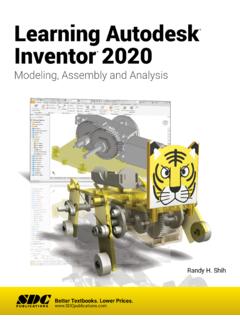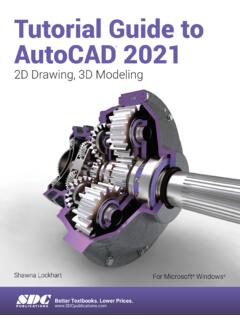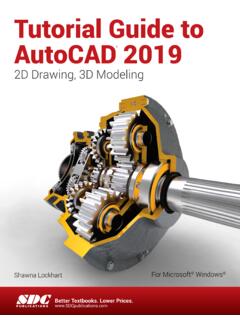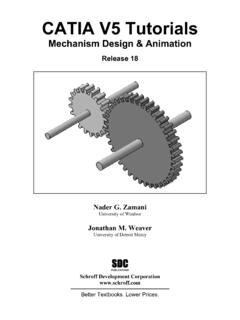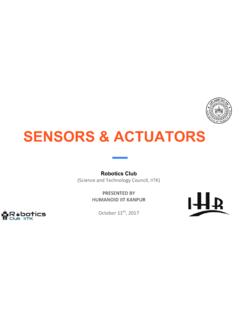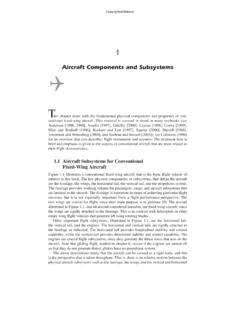Transcription of Autodesk Revit 2018 MEP Fundamentals - SDC Publications
1 Revit 2018 MEP FundamentalsAutodesk Textbooks. Lower the following websites to learn more about this book: Powered by TCPDF ( ) 2017, ASCENT - Center for Technical Knowledge 2 1 ChapterBasic Sketching and Modify ToolsBasic sketching, selecting, and modifying tools are the foundation of working with all types of elements in the Autodesk Revit software, including components such as air terminals, plumbing fixtures, and electrical devices. Using these tools with drawing aids helps you to place and modify elements to create accurate building Objectives in this Chapter Ease the placement of elements by incorporating drawing aids, such as alignment lines, temporary dimensions, permanent dimensions, and snaps.
2 Place Reference Planes as temporary guide lines. Insert components such as mechanical equipment, plumbing fixtures, and electrical devices. Use techniques to select and filter groups of elements. Modify elements using a contextual tab, Properties, temporary dimensions, and controls. Move, copy, rotate, and mirror elements and create array copies in linear and radial patterns. Autodesk Revit 2018 MEP: Fundamentals2 2 2017, ASCENT - Center for Technical Knowledge Using General Sketching ToolsWhen you start a command, the contextual tab on the ribbon, Options Bar, and Properties palette enable you to set up features for each new element you are placing in the project.
3 As you start modeling, several features called drawing aids display, as shown in Figure 2 1. They help you to create designs quickly and accurately. Figure 2 1 When you model ducts, pipes, cable trays, or conduits or place elements such as air terminals, lighting fixtures or plumbing fixtures, you first need to: Select a type from the Type Selector. Set information in the Options Bar. Check the Contextual tab for other AidsAs soon as you start sketching or placing elements, several drawing aids display, including: Alignment lines Temporary dimensions Snaps ConnectorsContextual tabOptions BarDrawing aidsProperties paletteBasic Sketching and Modify Tools 2017, ASCENT - Center for Technical Knowledge 2 3 These aids are available with most drawing and many modification commands, as shown in Figure 2 2 2 Alignment lines display as soon as you move the cursor over nearby elements.
4 They help keep lines horizontal, vertical, or at a specified angle. They also line up with the implied intersections of walls and other elements. Hold <Shift> to force the alignments to be orthogonal (90 degree angles only).Temporary dimensions display to help place elements at the correct length, angle and location. You can type in the dimension and then move the cursor until you see the dimension you want, or you can place the element and then modify the dimension as required. The length and angle increments shown vary depending on how far in or out the view is zoomed. For Imperial measurements (feet and inches), the software uses a default of feet.
5 For example, when you type 4 and press <Enter>, it assumes 4 -0 . For a distance such as 4 -6 , you can type any of the following: 4 -6 , 4 6, 4-6, or 4 6 (the numbers separated by a space). To indicate distances less than one foot, type the inch mark ( ) after the distance, or enter 0, a space, and then the LinesSnapsTemporary DimensionsAutodesk Revit 2018 MEP: Fundamentals2 4 2017, ASCENT - Center for Technical Knowledge Snaps are key points that help you reference existing elements to exact points when drawing, as shown in Figure 2 2 4 When you move the cursor over an element, the snap symbol displays.
6 Each snap location type displays with a different symbolConnectors (MEP only) work similar to snaps, but have more intelligence about the size, system, and flow of items ( , ducts, pipes, and electrical connections). For example, connectors automatically add fittings to ducts, such as the elbow, transition, and tee shown in Figure 2 2 5 Hint: Temporary Dimensions and Permanent DimensionsTemporary dimensions disappear as soon as you finish adding elements. If you want to make them permanent, select the control shown in Figure 2 2 3 Fittings controlled by connectorsBasic Sketching and Modify Tools 2017, ASCENT - Center for Technical Knowledge 2 5 Hint: Snap Settings and OverridesIn the Manage tab>Settings panel, click (Snaps) to open the Snaps dialog box, which is shown in Figure 2 6.
7 The Snaps dialog box enables you to set which snap points are active, and set the dimension increments displayed for temporary dimensions (both linear and angular).Figure 2 6 Keyboard shortcuts for each snap can be used to override the automatic snapping. Temporary overrides only affect a single pick, but can be very helpful when there are snaps nearby other than the one you want to use. Autodesk Revit 2018 MEP: Fundamentals2 6 2017, ASCENT - Center for Technical Knowledge UsingDimensions asDrawing AidsDimensions are a critical part of construction documents, but they can also help you create elements in your model.
8 There are a variety of dimension types available to you, but the most useful is the Aligned Dimension with the Individual References To: Add Aligned Dimensions to Individual References1. In the Quick Access Toolbar or the Modify tab>Measure panel, click (Aligned Dimension). Alternatively, type Select the elements in order, as shown in Figure 2 7. 3. To position the dimension string, click a point at a location where it is not touching anything 2 7 When you are using dimensions in a model, you can set a string of dimensions so that they are equal. Doing this updates the model elements, such as the location of sprinklers shown in Figure 2 2 8 BeforeAfterBasic Sketching and Modify Tools 2017, ASCENT - Center for Technical Knowledge 2 7 Hint: measuring ToolsWhen modifying a model, it is useful to know the distance between elements.
9 This can be done with temporary dimensions, or more frequently, by using the measuring tools found in the Quick Access Toolbar or on the Modify tab> Measure panel, as shown in Figure 2 2 9 (Measure Between Two References): Select two elements and the measurement displays. (Measure Along An Element): Select the edge of a linear element and the total length displays. Autodesk Revit 2018 MEP: Fundamentals2 8 2017, ASCENT - Center for Technical Knowledge ReferencePlanesAs you develop designs in the Autodesk Revit software, there are times when you need lines to help you define certain locations. You can draw reference planes (which display as dashed green lines) and snap to them whenever you need to line up elements.
10 For the example shown in Figure 2 10, the lighting fixtures in the reflected ceiling plan are placed using reference planes. To insert a reference plane, in the Architecture, Structure, or Systems tab>Work Plane panel, click (Ref Plane) or typeRP. Figure 2 10 Reference planes display in associated views because they are infinite planes, and not just lines. You can name Reference planes by clicking on <Click to name> and typing in the text box, as shown in Figure 2 2 11 If you sketch a reference pane in Sketch Mode (used with floors and similar elements), it does not display once the sketch is finished.
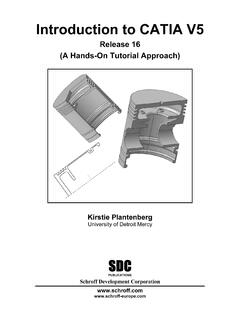
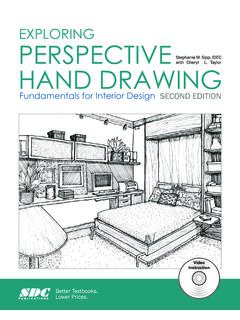
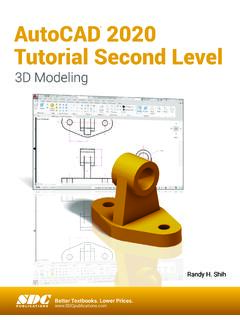
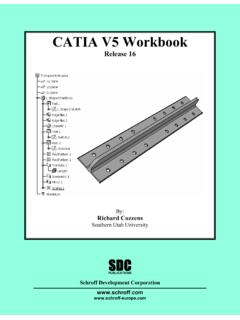
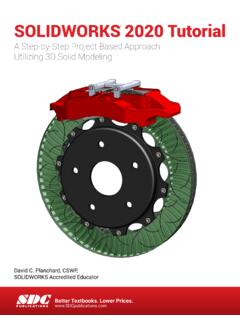
![Engineering Graphics Essentials [4th Edition]](/cache/preview/5/f/2/c/9/7/7/c/thumb-5f2c977c49c57cf1f6e1b8387a99c3df.jpg)
